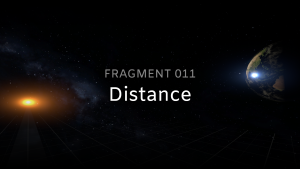Distance

In the world of video game design, the concept of distance plays a crucial role in shaping player experience. This fragment offers a unique opportunity to reflect on how distance, scale, and the sense of isolation are represented and perceived in games.
For a moment let’s talk about Fast travel. On one hand, it’s a convenient tool that respects the player’s time, especially in games with vast worlds like “Skyrim” or “The Witcher 3.” On the other hand, as highlighted in discussions on platforms like This great article by Brendan Calwell, fast travel can diminish the perceived scale and majesty of a game world. It can make a sprawling landscape feel compressed, turning a potentially epic journey into a series of instant transitions. This convenience, while practical, sometimes robs players of the immersive experience of traversing great distances and discovering the unexpected wonders along the way.
Space games, in particular, face the challenge of representing the unimaginable vastness of the cosmos. While some titles, like EVE Online, opt for a more condensed or stylized approach to make gameplay enjoyable, others like Starfield strive for realism, attempting to capture the sheer scale of space. However, truly representing the astronomical distances in a way that is both accurate and engaging for players is a significant challenge. Games often have to find a balance between realism and playability, as an entirely realistic portrayal of space travel might involve long periods of emptiness and inaction, which can test player engagement—and even lead to unintended feelings of isolation.
This sense of isolation is important to consider in regards to distance in games. In games that emphasize the scale of their world, such as No Man’s Sky or Elite Dangerous, isolation can become a powerful narrative and emotional tool. It can create a sense of awe at the grandeur of the universe, but it can also evoke feelings of insignificance and solitude. This isolation can lead to moments of introspection and self-reflection, allowing players to experience a deep connection with the game world that is both humbling and enriching.
The journey through the solar system in this fragment is not just a traversal of space, but a meditation on distance and scale in game design. It challenges the conventions of fast travel and condensed spaces, inviting players to experience the true vastness of our solar neighborhood. This fragment stands as a reminder that sometimes, the journey itself is as important as the destination, and that the perception of distance and scale can profoundly shape our gaming experience.
In embracing the vastness, both in space and conceptually, this fragment and games like it ask us to consider our relationship with distance and isolation. They encourage us to ponder the impact of these elements on our perception of the game world and our place within it. As game design continues to evolve, the exploration of these themes will undoubtedly lead to new innovations and experiences, expanding the boundaries of how we interact with and understand virtual spaces.

Comments are Closed